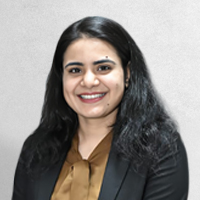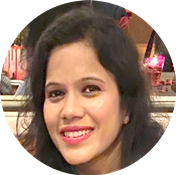Introduction
A patent is a type of intellectual property that gives its owner the legal right to prevent others from making, using, or selling an invention for a set period of time. In some countries, patent rights are protected by private law, which means that to have their rights enforced, the patent holder must sue someone who infringes on the patent. Patents can provide a significant competitive advantage. Patents are important sources of competitive advantage for Companies.
A new product or a process involving an inventive step that is capable of industrial application can be defined as an invention. One can secure any genuine invention by registering for a patent.
WHAT INVENTIONS ARE PATENTABLE
- Novel: The invention must be novel. It makes no difference how, by whom, or where it was made known. Even if one has used or published the invention, it is considered as in existence
- Unique: Invention must not have existential trace of it. The new ways of combining existing methods or objects and improvement in the current technology is not patentable
- Industrial Applicability: An invention is considered as patentable when it can be used, manufactured, produced or utilized in any kind of industry.
WHAT INVENTIONS ARE NON-PATENTABLE
- Inventions that are frivolous and contrary to natural laws
- Inventions which go against public morality
- Inventions that are a mere discovery of something that already exists in nature
- The mere discovery of a form already existing in nature does not lead to enhancement of efficacy
- Mere admixing of mixtures leading in the aggregation of properties are non- patentable
- Mere aggregation or duplication of devices working in a known way is not an invention
- Horticulture or agricultural method is non-patentable
- Medicinal, curative, prophylactic, diagnostic, therapeutic for treating diseases in human and animals are non-patentable
- Essential biological processes for the production or propagation of animals and plants is not an invention
- Simple mathematical or business or computer programs are not an invention
- Aesthetic creation is not an invention
- Mental act, rule or method is not an invention
- Presentation of information is non-patentable
- The topography of integrated circuits is non-patentable
- Traditional Knowledge is not an invention
- Atomic-Energy inventions are non -patentable.
IS PATENT AN ABSOLUTE RIGHT?
The right to a patent is not absolute. It is a fettered right that is subject to certain predetermined limitations. The Patents Act strikes a good balance between the patentee’s individual rights and the public’s interest. The monopoly granted by a patent is not absolute. Along with protecting the right-holder for his invention, the Act also considers the public’s interests, with the primary goal of the Act being to encourage the development of technology and innovation.
WHO CAN APPLY FOR A PATENT?
- A patent application can be filed by the true and first inventor or his assignee, alone or in collaboration with others or through authorized Patent Attorney
- A legal representative of a deceased person can file a patent application.
TYPES OF PATENT APPLICATION
- Provisional Application: A provisional application is a temporary application filed when an invention is still being tested and not ready to be filed.
- Ordinary or Non-Provisional Application: This type of application is filed if the applicant has no claim to priority or if the application is not in response to a previous convention application. It needs to be accompanied by a comprehensive specification.
- Convention Application: A convention application is filed to claim a priority date based on a prior application filed in any of the convention countries that is identical or substantially similar. To obtain convention status, an applicant must file an application with the Indian Patent Office within a year of the date on which a similar application was first filed in the convention country.
- PCT International Application: An international application is a PCT Application. The application does not grant an international patent, but it does pave the way for a streamlined patent application process in multiple countries at once.
- PCT National Phase Application: An applicant is required to file a national phase application in each country where protection is sought. The deadline for filing the application is 31 months from the priority date or the international filing date, whichever comes first.
- Patent of Addition: This application must be filed if the applicant discovers that he has come across an invention which is a slight modification of the invention which has already been applied for or patented by the applicant.
- Divisional Application: If a single application claims more than one invention, the applicant may choose to divide the application and submit two or more applications.
PROCEDURE TO BE FOLLOWED FOR APPLYING FOR A PATENT
- Patent attorneys are experts at preparing and filing patent applications as well as representing clients in court in cases involving patents such as infringement, licensing, and re-examination
- Every Applicant shall make an application for Patent in Form 1 (Application for grant of patent) or in Form 2 (Provisional/Complete specification), only for one invention along with the proof of the right to make the application
- If the proof of the right to make the application is not furnished with the application, shall be filed within a period of six months to the patent office
- Within 48 months of the date of priority of the application or the date of filing of the application, a request for examination be filed for examination of the application
- Following the release of the first examination report, the applicant is given the opportunity to respond to the report’s objections
- The applicant must meet the requirements within 6 months of receiving the first examination report, which may be extended for an additional 3 months at the applicant’s request
- If the applicant fails to comply with the requirements of the first examination report within the time frame of 9 months, the application is considered as abandoned
- After all objections have been addressed and all requirements have been met, the patent is granted and published in the Patent Office Journal.
TERM OF PATENT
Every patent in India is valid for 20 years from the date of filing, even it is filed with a provisional or complete specification. Every patentee must renew their patent every year by paying a renewal fee. There is no renewal fee for the first two years. From the third year onwards, the renewal fee is due. The patent will be revoked if the renewal fee is not paid. After 20 Years Patents cannot be extended and becomes a part of public domain.
POST PATENT COMPLIANCES
RESTORATION OF LICENSE
A patentee or his legal representative has the safeguard to restore a lapsed patent by making an application in Form 15 along with the renewable fees within 18 months from the date of lapse.
FOREIGN FILING LICENSE
- If an Indian resident or Company intends to file a patent outside India, shall have to obtain a permission i.e. foreign filing license from Indian Patent Office first
- The request for making permission for filing patent outside India is made in Form 25
- An application for a patent for the same invention has been made in India, not less than six weeks before the application outside India
INTIMATION REGARDING PATENT FILED OUTSIDE INDIA
- Every Applicant shall make a statement and undertaking in Form 3 within six months from the date of the filing of the application for Patent outside India
- Disclosure of statement containing details of Country, applicant and invention
- Non compliance of filing of Form 3 leads to revocation of Patent Applications.
COMPULSORY LICENSING
- In contrast to the exclusive rights that are conferred on a patentee to use, make, or sell a patented invention and prevent unauthorized and illegal use by third parties, a compulsory license allows a third party to use, make, or sell an invention for which a patent has been granted without the consent of the patent owner
- After three years have passed since the patent was granted, any person interested may submit an application to the Controller for the grant of a compulsory license on the following grounds:
- the public’s reasonable requirements for the patented invention have not been met or
- the patented invention is not available to the public at a reasonable price or
- the patented invention has not been operational in India’s territory
- When the aforementioned conditions are met, a person who is already the holder of a patent license can apply to the Controller for the grant of a compulsory license.
RECENT DEVELOPMENTS
The Patents (Amendment) Rules, 2021 came into effect on September 21, 2021 with following key changes:
- Union Government has reduced the patent filing and processing fees that are imposed on educational institutions by approx 80%.
- The reduction in fees is at par with similar concession granted to start-ups under the Start-up India initiative
- Indian as well as Foreign applicants can claim the status of eligible educational institutions now, by submitting a Declaration in Form 28.
TERRITORIAL JURISDICTION OF APPROPRIATE OFFICE FOR THE APPLICANTS
| S.No. | Patent Office Branch | Territorial jurisdiction |
|---|---|---|
| 1. | Mumbai | The States of Maharashtra, Gujarat, Madhya Pradesh, Goa and Chhattisgarh and the Union Territories of Daman and Diu & Dadra and Nagar Haveli |
| 2. | Chennai | The States of Andhra Pradesh, Karnataka, Kerala, Tamil Nadu, Telangana and the Union Territories of Pondicherry and Lakshadweep |
| 3. | New Delhi | The States of Haryana, Himachal Pradesh, Punjab, Rajasthan, Uttar Pradesh, Utarakhand, Delhi and the Union Territory of Chandigarh, Jammu and Kashmir and Ladakh. |
| 4. | Kolkata | The rest of India. |
Disclaimer
The information provided in this article is intended for general informational purposes only and should not be construed as legal advice. The content of this article is not intended to create and receipt of it does not constitute any relationship. Readers should not act upon this information without seeking professional legal counsel.


